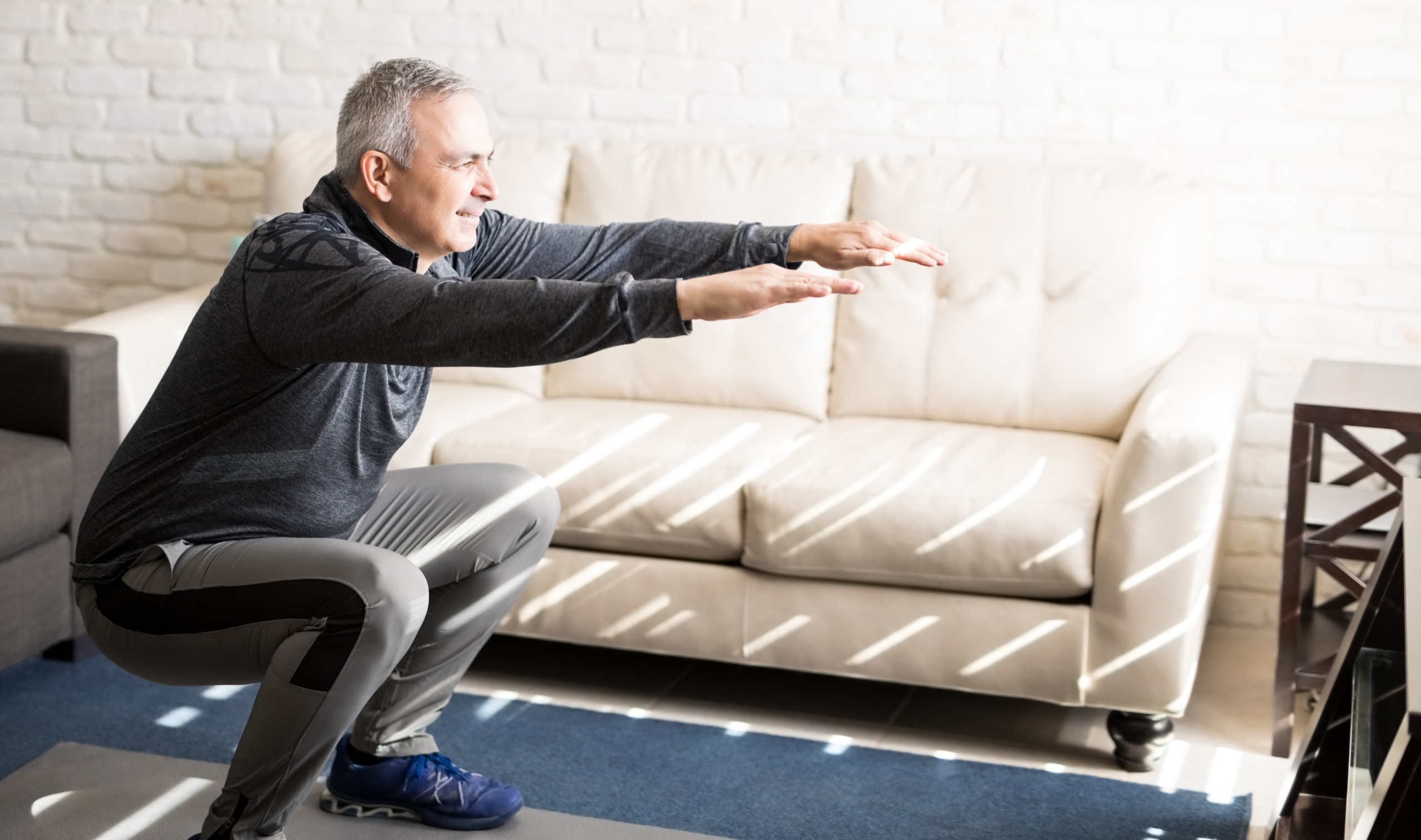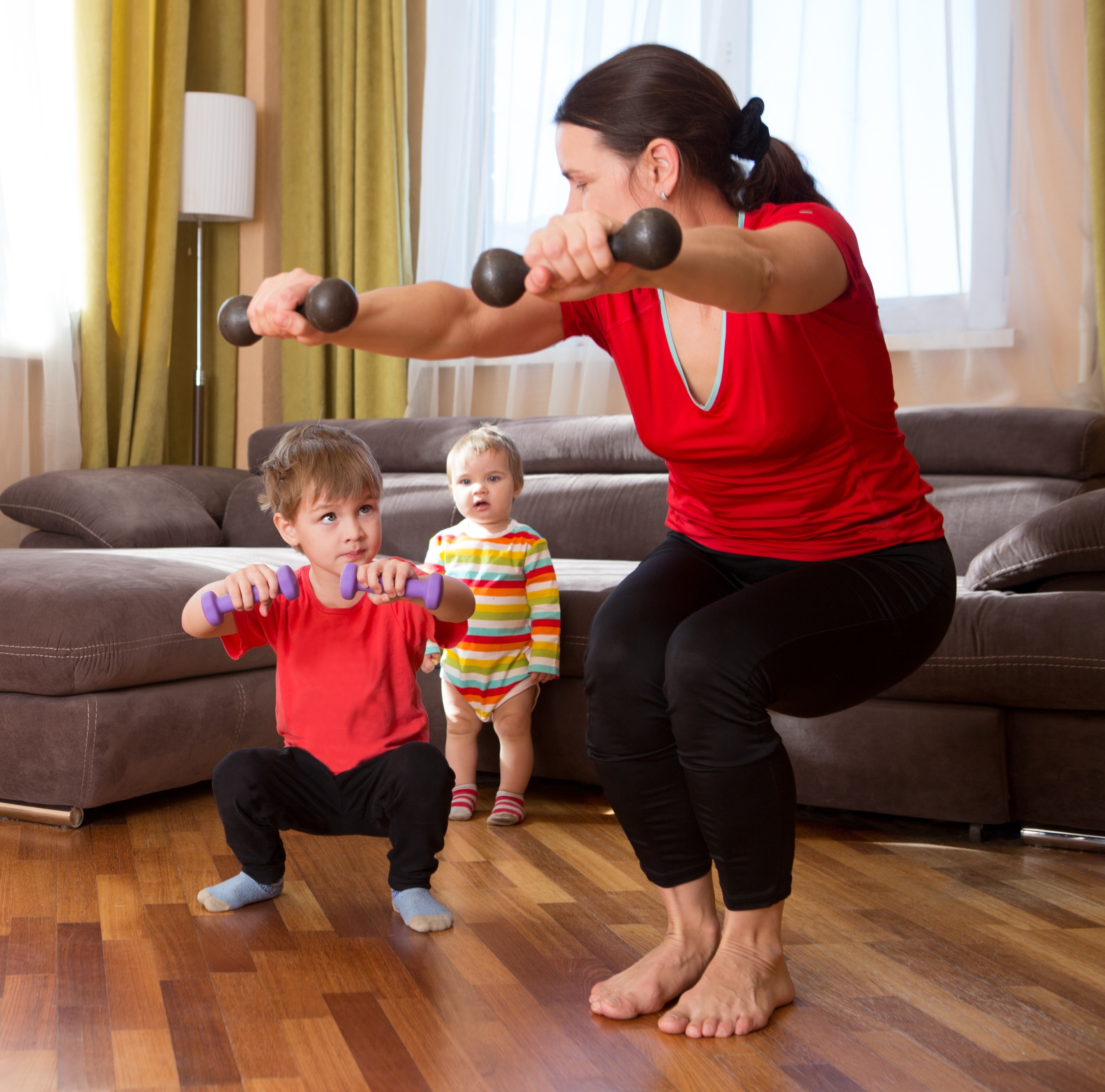Exercising at home – could it be that simple?
Alex Manos, one of Complete Physio’s specialist physiotherapists, based at our Chelsea clinic, shares his thoughts on exercising at home. Could this period of ‘social distancing’ be a potential opportunity?
Whilst gyms, sporting clubs, and social teams are all shut down right now, it is proving a challenging time for many people to keep up their usual exercise routine. We have seen a huge uptake of home exercise in the last few weeks with people following various online exercise programs. There is so much available online nowadays with a great variety in type of exercise – yoga, Pilates, HIIT, boxing, core workouts, bike sessions, and more. This is fantastic as we know how important it is, particularly in the current climate, to stay active and healthy for body and mind. Here at Complete Physio, we encourage all of you to stay active and maintain previous exercises levels as far as possible. What we realise though is that for many people, the type of exercise will be different to what you have been used to, and for others this will be a kick start to a new level of exercise. To keep you as safe as possible here are some tips to ensure you have a great home workout experience and avoid any injuries!
Set up
Unless you have the luxury of a home gym, most people will be exercising in the living room, bedroom or perhaps outside. Although it sounds like common sense, it is not always common practice to ensure you have adequate space. A friend of mine, alone in a yoga studio practicing headstands, flipped over and cut her foot quite severely on a Buddha statue as she was too close to the wall – she ended up in A&E! It happens, so please make sure you clear your exercise area of anything that could get in the way. A good tip would be to make sure you have at least your own body height in space in all directions or use an exercise mat in all directions to map out a space. Check behind you as well.
Equipment
At home, people will most likely be using things such as dumbbells, kettle bells, resistance bands, Swiss balls and maybe some training tools like Ab rollers or other core exercise aids. It’s important that you check things like Swiss balls regularly to ensure they are adequately inflated. If you are using resistance bands and attaching them to something to pull from, make sure that whatever it is you are attaching it to is secure. A loose-fitting door handle, the oven door, or a wobbly banister are unlikely to be fit for purpose. Something like the foot of a heavy bed or sofa may work as long as it is sturdy and heavy enough to not move when you are using the band. Check before you pull too hard!
Training buddies
Training with someone in your household is a great idea to keep motivation levels up, be pushed a little harder and also maintain some social interaction. It is important though that you aware of each other’s capabilities and what baseline level of fitness you are starting from. For example, the case of a middle-aged parent about to start a new exercise program with their 16-year-old super fit child. Whilst this is great, there might be a feeling of pressure for the parent to try and keep up with their child and this could lead to injury. We have all heard and, as physios, seen many a parent come in injured having competed in the annual school sports day! It happens more often than you think and even at home it is a risk. So just be aware of your own limitations and don’t get too competitive with your fitness level straight away.
Type of exercise
With more time on our hands right now, it is an opportunity to try something new, learn a new skill or add some variety to pre-existing exercise routines. Variety is key to maintaining a balanced body and not overloading certain areas so it’s definitely something we encourage. But learning a new skill or type of exercises takes time. Again, speaking from experience of treating thousands of clients over the years, it’s not uncommon for us to see people who have been injured in the early stages of taking up a new type of exercises. Even something as ‘simple’ as running which is one of the easiest things to take up right now can come with risks. Even if you have been a runner in the past, taking up running after a break of even a couple of months can pose a risk. Joints, tissues, muscles all need a period of adaptation over time so if adequate load hasn’t been on those body parts for several weeks, months or even years then quickly exposing them to a sudden increase in load could cause injury. There are programs online such as the ‘Couch to 5km’ which are designed for people who have been sedentary and want to now be more active. Whatever your chosen activity, start slowly and progress within your capabilities.
One of the most common forms of home exercise is HIIT which stands for High Intensity Interval Training. This involves short bursts of exercises followed by short rest periods for a total duration of usually 20-40 minutes. There are lots of variations of HIIT, and periods can range from 20 seconds to 2 minutes of exercise with differing periods of rest depending on the type of workout. A common type of exercise to include in HIIT workouts is plyometric exercise. This is essentially jumping type work so think, burpees, squat jumps, single leg bounds, lunge jumps. An example of a plyometric exercise for the upper body would be a clap push up. The reason they are so useful in HIIT training is because they are hard, you only have to do a few repetitions to gain good cardiovascular or strength gains. Essentially, you can work for less time with similar effect. However, the risk with doing plyometric exercise without a solid base of strength and conditioning is that the load going through certain body parts can be up to 10x a normal exercise, possibly leading to injury. For example, repeated single leg hops can place up to 10x body weight on the Achilles tendon. It’s really important to ensure you have an adequate strength base and good form before you try plyometric training.
As health care practitioners, the team at Complete Physio encourage you to stay as healthy and active as possible but we all want you to be safe in doing so.
Need some help with designing and implementing a safe and effective exercise programme?
Whilst not being able to offer face-to-face physiotherapy due to the Covid-19 social distancing measures, Alex is continuing to offer physiotherapy services via remote video consultations. If you would like an online consultation to talk about your current needs and to get set up with an appropriate and goal-oriented programme, please email Alex at alexmanos@complete-physio.co.uk or call 020 7482 3875.
Don’t let pain hold you back, book now!




